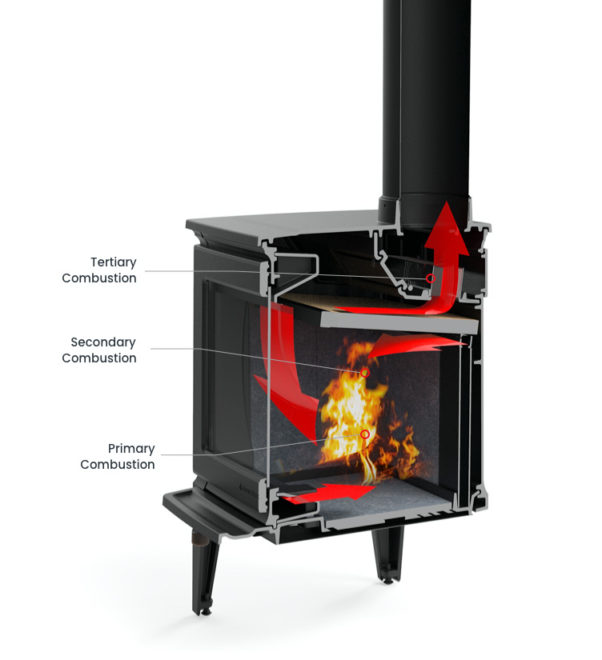Features & Functionality
Ultra-clean
The TruHybrid™ system combines primary and secondary combustion with a tertiary combustion using a catalyst to achieve ultra clean combustion that surpasses 2020 EPA clean air standards.
High efficiency
Once engaged, the catalysts clean any unburned dust and gases before they go up the chimney. With the air control set to low, your stove will burn slowly and efficiently for up to 30 hours*. This long, slow, efficient burn means you’re getting the most heat out of each piece of wood.
How it works
The fire visible through the front window is the result of primary and secondary combustion at work. Primary combustion is the burning of the solid fuel, the wood. Secondary combustion happens above the wood, burning the gases the wood gives off. Tertiary combustion takes place in the catalyst. Any remaining dust and gases are burned before going up the chimney.


This system is easy to operate with a single lever air control and an easy catalyst control handle.
Simply adjust the single lever air control from low to high and the wood load burns cleanly and efficiently with primary and secondary combustion air.
Open the catalyst control handle for smokeless startups, close it for long, efficient fires.


Our Catalysts
The TruHybrid™ System promotes longer catalyst life and fewer maintenance concerns than other catalytic wood burning products.
Catalyst position: Our catalysts are positioned above and away from the front of the baffle. They are positioned after the primary and secondary combustion, so they are always working on pre-cleaned exhaust. They are also protected from direct flame from the fire.
Catalyst operating temperature: Our catalysts operate at temperatures between 1200 ̊ – 1400 ̊F, which is lower than traditional wood stove catalysts.
Catalyst construction: Our catalysts are made from sheets of coated stainless steel. They are designed to expand and contract through the cycles of operation indefinitely.